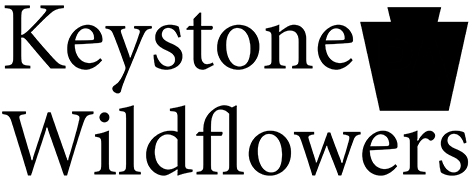Sun
Showing 49–72 of 109 results
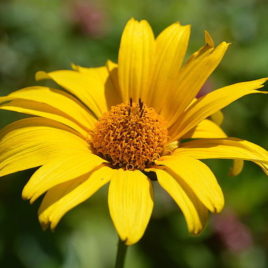
Heliopsis helianthoides
Heliopsis helianthoides, or Ox-Eye or False Sunflower, produces bright yellow flowers in early to mid-summer, thriving in moist to heavy soils. The Ox-Eye Sunflower or False Sunflower appears sunflower-like with daisy flowers. The flowers are visited by honey bees, native … Continued
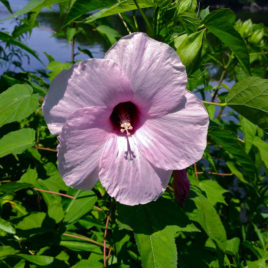
Hibiscus laevis
Hibiscus laevis, or Rose Mallow, is a native of marshes and low-lying areas, producing large, showy pink flowers up to six inches in diameter. Rose Mallow makes a great addition to pond margins or areas with water features, as it … Continued
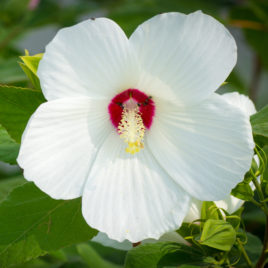
Hibiscus moscheutos
Hibiscus moscheutos, or Swamp Rose Mallow, is a robust, attractive plant with large leaves and stunning white flowers with dark pink centers. Each exotic appearing bloom lasts a day, but they are produced repeatedly for about a month. The plant … Continued
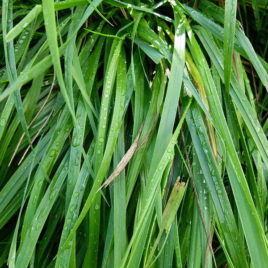
Hierochloe odorata
Hierochloe odorata, or Sweet Grass, is an aromatic, native, perennial grass, growing 1-2 feet. Sweet Grass prefers moist, rich soils in full sun, but it can be grown in medium moist soils and sand, loam, or clay. Its glossy-green leaves … Continued
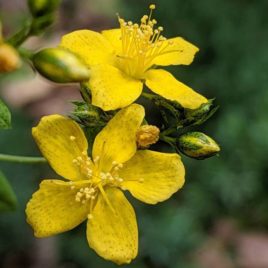
Hypericum punctatum
Hypericum perforatum, or Dotted St. John’s Wort, is a 1-3 foot tall common perennial preferring medium to well-drained, mesic soils and full to part sun. The plant’s yellow flowers with black dots and bushy stamens appear in late June to … Continued
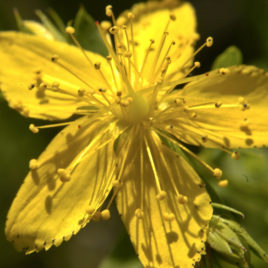
Hypericum pyramidatum
Hypericum pyramidatum, or Great St. John’s Wort, is a 2-5 foot tall perennial preferring moist to wet soils and full to part sun. Great St. John’s Wort’s large two-inch yellow flowers with bushy stamens appear in late June to August. … Continued
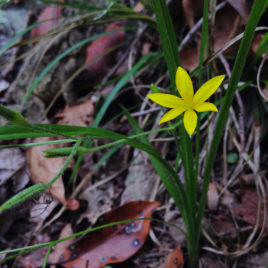
Hypoxis hirsuta
Hypoxis hirsuta, or Yellow Star Grass, is a one-foot, perennial wildflower found in dry to wet-mesic soils and full to part sun. Yellow Star Grass features tufted, grass-like leaves and yellow, star-shaped flowers that appear in mid-spring to early summer. … Continued
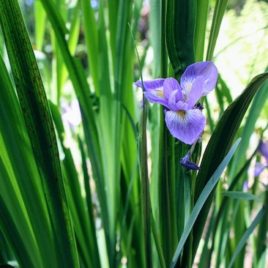
Iris versicolor
Iris versicolor, or Northern Blue Flag is a 2-3 foot wetland perennial preferring full to part sun in moist to wet soils. Northern Blue Flag’s blue flowers with yellow throats arise from sword-shaped leaves from June to July. The perennial … Continued
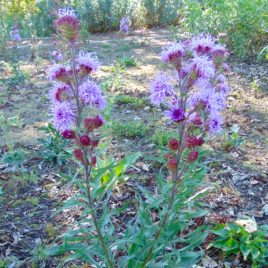
Liatris ligulistylis
Liatris ligulistylis, or Meadow Blazing Star, is a 3-5 foot native perennial that prefers full sun in medium, moist soils. Meadow Blazing Star produces magenta-purple blooms in late summer, and it is the ultimate monarch magnet. The native perennial is … Continued
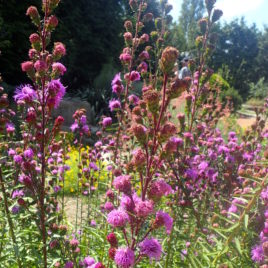
Liatris scariosa
Eastern Blazing Star, or Liatris scariosa, is a two-foot-tall perennial preferring dry soils and full to part sun. Eastern Blazing Star’s rose-purple flower spikes appear in late summer from August to September. The perennial is tough, making it tolerant of … Continued
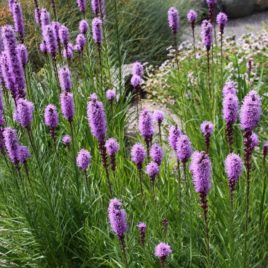
Liatris spicata
Liatris spicata, or Marsh Blazing Star, is a 2-4 foot tall long-lived perennial preferring moist to wet average soils in full sun. Marsh Blazing Star’s pink-purple flower spikes appear in summer, attracting butterflies, hummingbirds and birds. The plant is great … Continued
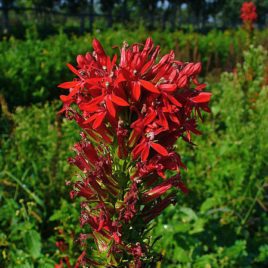
Lobelia cardinalis
Lobelia cardinalis, or Cardinal Flower, is a 3-4 foot tall showy perennial with luminous scarlet-red flower spikes that appear from July through September. Cardinal Flower prefers full to part sun and moist to wet soils. It is an excellent nectar … Continued
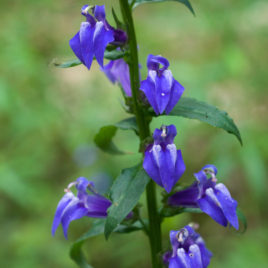
Lobelia siphilitica
Lobelia siphilitica, or Great Blue Lobelia, is a 2-3 foot perennial covered with deep blue flowers in late summer to early fall. Great Blue Lobelia prefers part to full sun in moist to wet soils. It attracts hummingbirds and butterflies … Continued
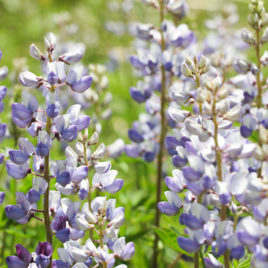
Lupinus perennis
Lupinus perennis, or Wild Lupine, is a two-foot late spring flowering perennial with shimmering spikes of bright blue flowers. It prefers dry sandy or gravelly acid soils in part to full sun. Wild Lupine is a nitrogen-fixing plant, which aids … Continued
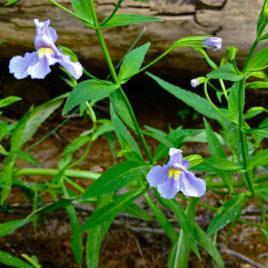
Mimulus ringens
Mimulus ringens, or Monkey Flower, is a 2-3 foot hardy perennial for wet meadows and watersides. Monkey Flower is a long summer bloomer with bright violet flowers preferring moist to wet rich soils in part to full sun. Be sure … Continued
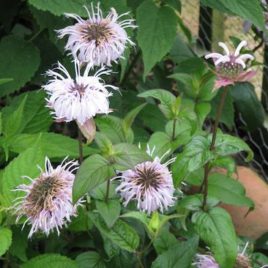
Monarda bradburiana
Monarda bradburiana, or Bradbury Monarda, is a two-foot perennial, shorter and more compact than the popular classic Wild Bergamot. Bradbury Monarda has a wonderful minty smell and attracts many pollinating insects and hummingbirds.
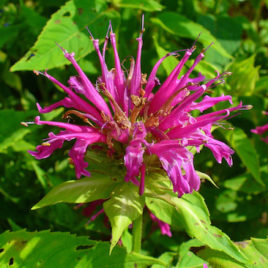
Monarda didyma
Monarda didyma, or Scarlet Beebalm, is a three-foot showy perennial with scarlet red blooms, appearing July to September. Scarlet Beebalm is easy to grow and prefers full sun to light shade in moist soils. Scarlet Beebalm is a great nectar … Continued
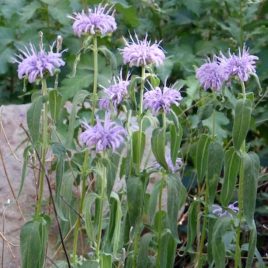
Monarda fistulosa
Monarda fistulosa, or Wild Bergamot, is a 2-4 foot adaptable and lovely perennial with a rounded habit. Wild Bergamot’s sweetly aromatic foliage produces violet blooms in summer. The perennial prefers moist fertile soils in full sun to light shade. Used … Continued
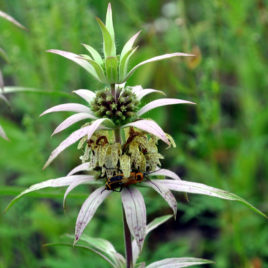
Monarda punctata
Monarda punctata, or Spotted Bee Balm, is a 2-3 foot perennial with pink, green and brown-purple spotted flowers in late summer. Spotted Bee Balm prefers moist to dry sandy or gravelly soils in sun to part sun. It is a … Continued
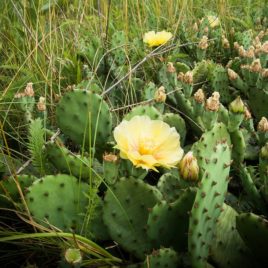
Opuntia humifusa
Opuntia humifusa, or Eastern Prickly Pear Cactus, is a sun-loving cactus native to eastern North America. This cactus thrives in full sun and sandy, dry conditions, making it ideal for the driest part of your garden. Eastern Prickly Pear Cactus … Continued
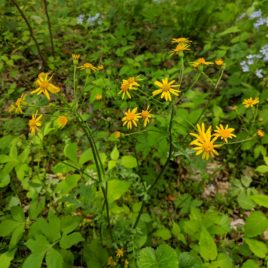
Packera aurea
Packera aurea, or Golden Ragwort (Golden Groundsel), is a 1-2’ tall, herbaceous perennial for average, medium to wet soils in full sun to shady sites. Golden Groundsel or Golden Ragwort produces clusters of small golden flowers in May. It is … Continued
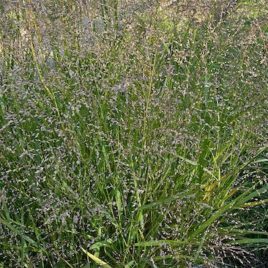
Panicum virgatum
Panicum virgatum, or Switch Grass, is a 3-4 foot warm season, clump grass found in dry to wet soils and grows best in sun to part sun. Switch Grass’ pink-tinged flowers are open and form a fine-textured cluster in mid-summer. … Continued
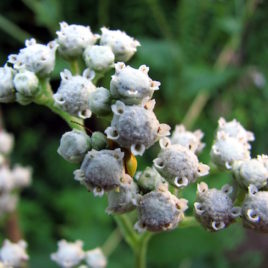
Parthenium integrifolium
Parthenium integrifolium, or Wild Quinine, is a three-foot perennial, producing dense, white, cauliflower-like flowers from June to September. The leaves of the plant were used by Native Americans in a tea to reduce fevers.
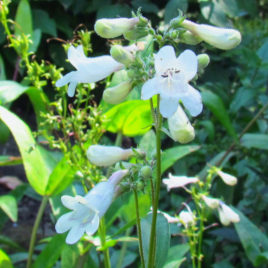
Penstemon digitalis
Penstemon digitalis, or Foxglove Beardtongue, is a 3-4 foot perennial preferring medium, moist soils in sun to shade. Foxglove Beardtongue’s attractive white blooms appear in June-July and attract honeybees, bumblebees, Miner bees, Mason bees, and hummingbirds. Penstemon digitalis is also … Continued

